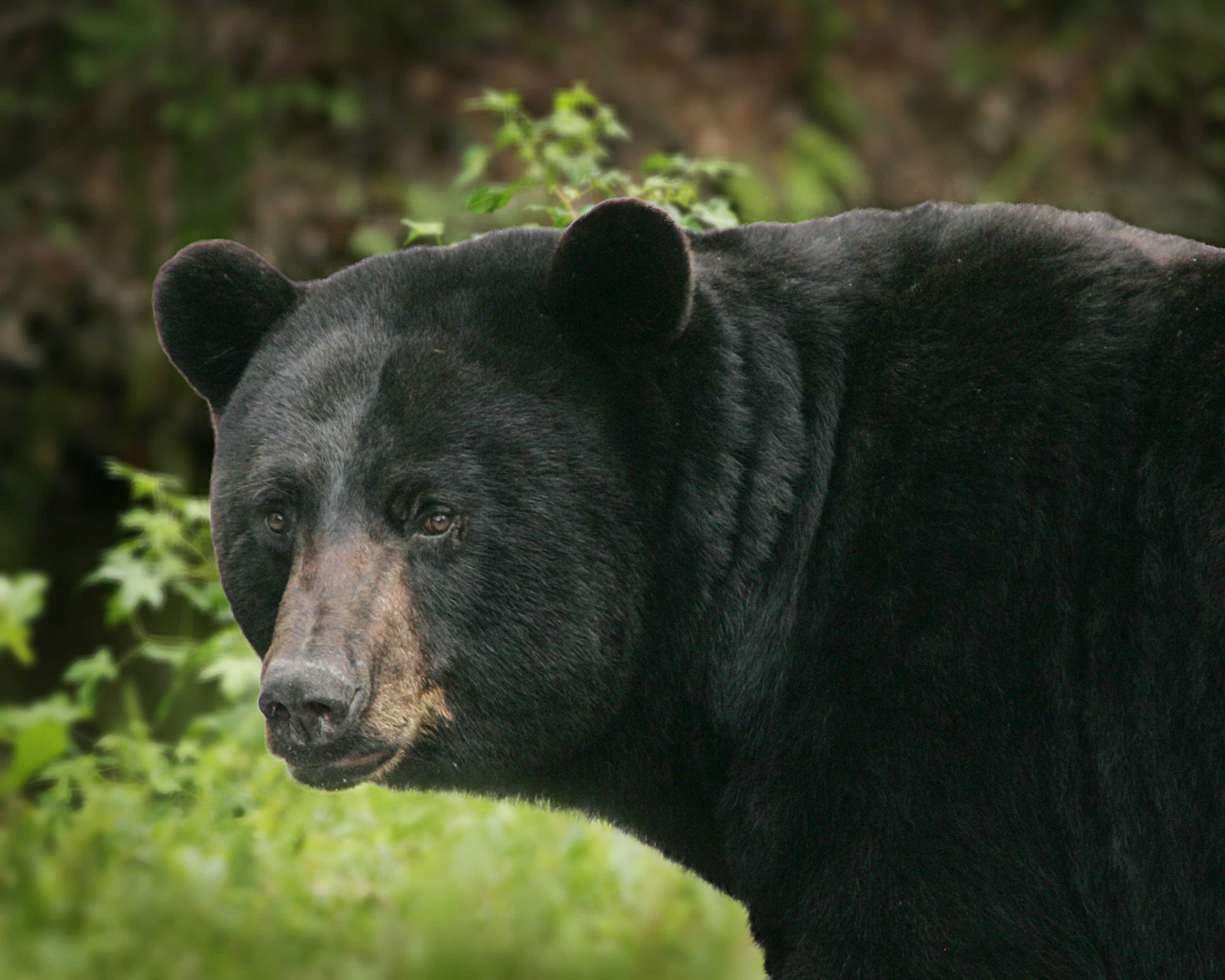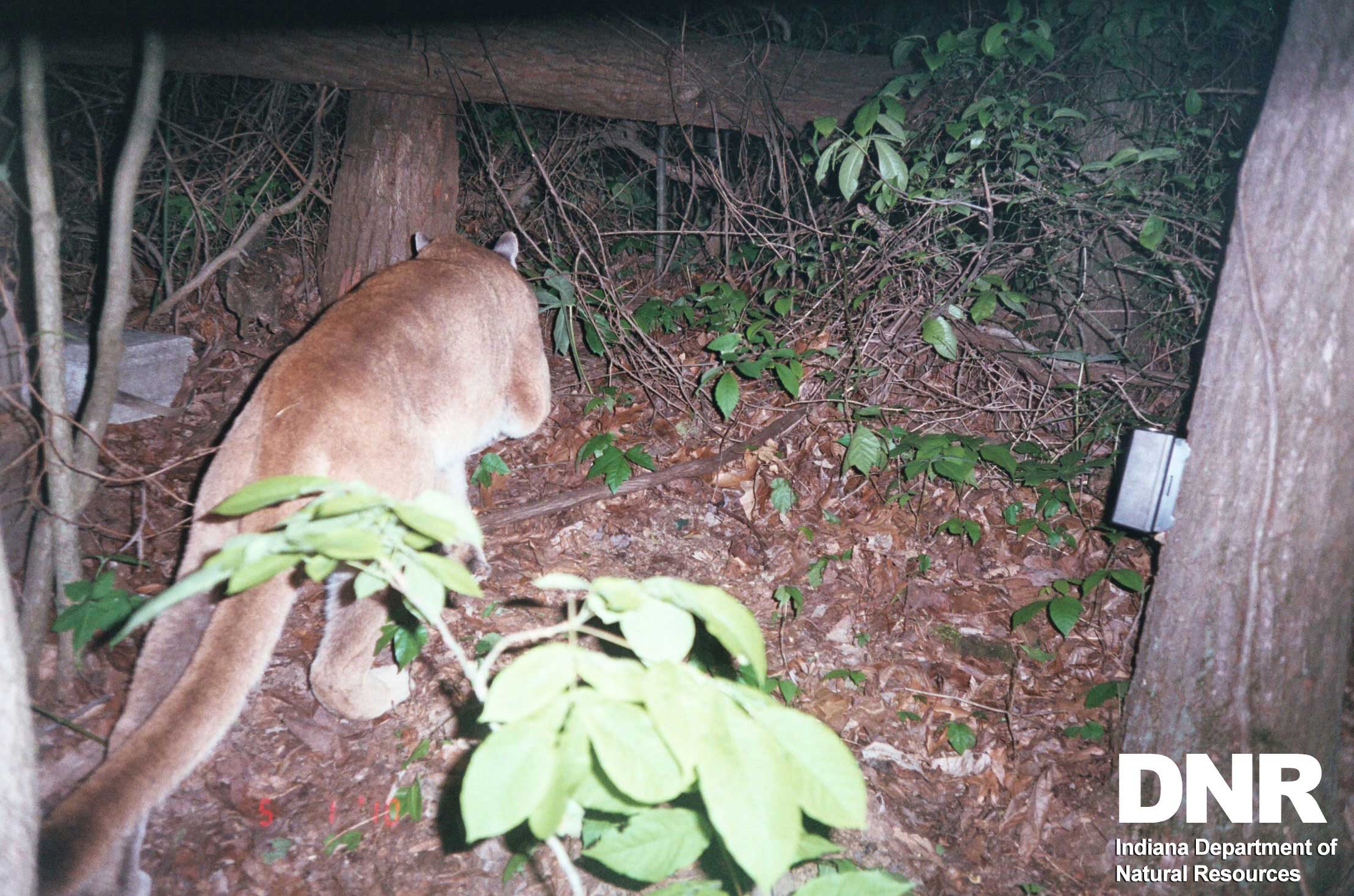Black Bears and Other Large Predators in Indiana
By Brian MacGowan
 Black bears, along with several other large carnivores, have become extirpated from Indiana with only a few rare records after 1830. Credit: Steve Hillebrand/USFWSLast summer, the sighting of a black bear in northern Indiana was the first confirmed for the state in 144 years. This July, a second bear swam across the Ohio River from Kentucky. Several years before we had a similar sighting of a gray wolf in Indiana –actually it was shot in killed by a farmer. Some may be surprised that the black bear and many other species of wildlife including wolves, cougars, fisher, porcupine and bison were historically present in Indiana and other parts of the Midwest. These species have been extirpated (i.e., locally extinct) since the 1800s. So what do these recent encounters with large predators in Indiana really mean?
Black bears, along with several other large carnivores, have become extirpated from Indiana with only a few rare records after 1830. Credit: Steve Hillebrand/USFWSLast summer, the sighting of a black bear in northern Indiana was the first confirmed for the state in 144 years. This July, a second bear swam across the Ohio River from Kentucky. Several years before we had a similar sighting of a gray wolf in Indiana –actually it was shot in killed by a farmer. Some may be surprised that the black bear and many other species of wildlife including wolves, cougars, fisher, porcupine and bison were historically present in Indiana and other parts of the Midwest. These species have been extirpated (i.e., locally extinct) since the 1800s. So what do these recent encounters with large predators in Indiana really mean? The majority of large predator sightings in Indiana are either mistaken identity or internet hoaxes. However, sometimes they are real. The truth is as long as there is a source population of animals in neighboring states, we can always get a “stray” animal every now and then. A young male was observed in the cases for both the black bear and wolf sightings. Common with many species, young males will travel a distance to establish a new territory. This type of movement is called dispersal and is important for maintaining wildlife populations, especially in landscapes where the habitat is fragmented. Occasionally, these distances can span hundreds of miles. Think of that stereotypical teenager on the couch. One day mom and dad come home and might say something like, “it’s time to get up, make something of yourself – get out.”
Sometimes, the source of a predator sighting may be much closer. The last confirmed sighting of a mountain lion in Indiana was in May 2010 in Greene County pictures were definitely a mountain lion, but close inspection also revealed an ear tag – evidence of an escaped pet. Indiana allows the possession of exotic animals including bears, wolves and wild cats. Occasionally, these animals may escape. Up until recently, the Indiana Department of Natural Resources regulated these activities, and oversaw enclosure and care requirements. According to an August 9, 2014 Indianapolis Star article, there were permits for 300 exotic and wild animals in Indiana; some of these for more dangerous animals. However, an Indiana Court of Appeals last year ruled that the DNR has no authority over their possession and now owners of exotic animals no longer require a permit.
In the case of black bears, free-ranging populations exist in Ohio, Kentucky, Michigan and Wisconsin, although not in parts immediately adjacent to Indiana. Dispersing bears have to go a long distance through a lot of less than optimal habitat to reach Indiana. This explains why the occurrence of bears have been, and will continue to be, rare. The bears will typically spend a bit of time in an area and move on, or back where they came from. With no female bears in the area, a breeding population can’t become established. Even so, we can expect to see more come back in the future, albeit infrequently. The populations in our neighboring states are doing fine. Reported bear sightings in Ohio have increased since the late-90s.  There are no breeding populations of mountain lion or other large predators in Indiana. However, it is possible for one of these large animals to pass through Indiana from established populations in other states.
There are no breeding populations of mountain lion or other large predators in Indiana. However, it is possible for one of these large animals to pass through Indiana from established populations in other states.
 There are no breeding populations of mountain lion or other large predators in Indiana. However, it is possible for one of these large animals to pass through Indiana from established populations in other states.
There are no breeding populations of mountain lion or other large predators in Indiana. However, it is possible for one of these large animals to pass through Indiana from established populations in other states. What does this mean for you? It’s impossible to tell if bears will eventually become established in Indiana on their own. While we can’t predict the occasional bear sighting in Indiana, we can be more prepared on how to prevent problems with bears when they do arrive for a visit. Unfortunately, the bear that visited Indiana last year was eventually euthanized on April 9, 2016 by the Michigan DNR because of continued behaviors considered to be a threat to public safety. Our most recent visiting bear has remained at Big Oaks National Wildlife Area since August 9th as of this writing.
When living around bears, an important key is to prevent them from associating people with food. For example, storing pet food, garbage containers and outdoor grills in the garage can help. Removing bird feeders around the house may help too. Most important of all is to never intentionally feed a bear. This is also a good practice to follow for other Indiana wildlife such as coyotes and raccoons. While seeing a bear wandering around the Hoosier countryside can be eye opening, the fact is this is nothing new for many parts of the country who live with bears on a daily basis. A little common sense and precaution can go a long way the next time a young bear decides to visit Indiana on its summer vacation. If you think you have seen a bear or other large mammal, the Indiana DNR has created an online reporting form at www.in.gov/dnr/fishwild/8497.htm where visitors can upload pictures and video, information about the animal and the location of sighting.
Resources
Cougar Network (www.cougarnet.org/confirmations) The Cougar Network is a nonprofit research organization dedicated to studying cougar-habitat relationships and the role of cougars in ecosystems. They maintain an online map of confirmed cougar sightings outside of their western range since 1990.
